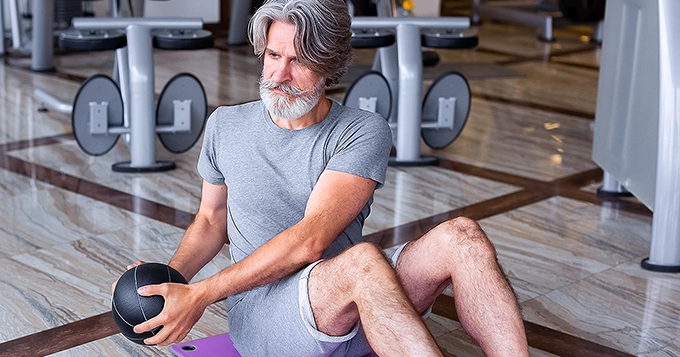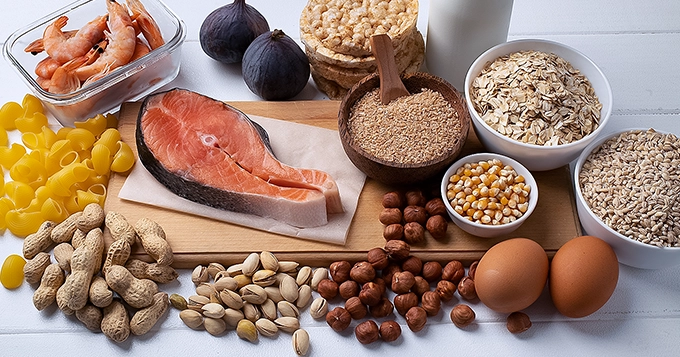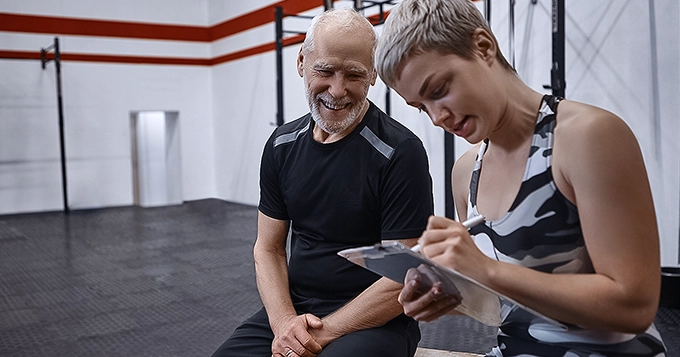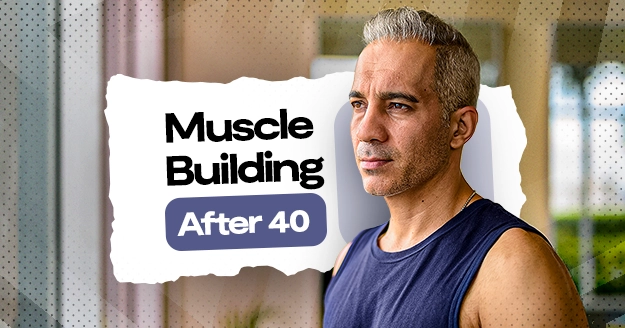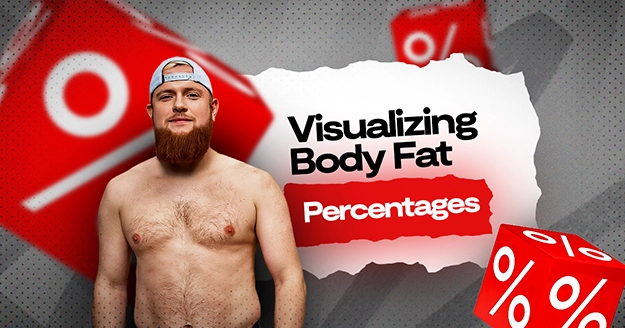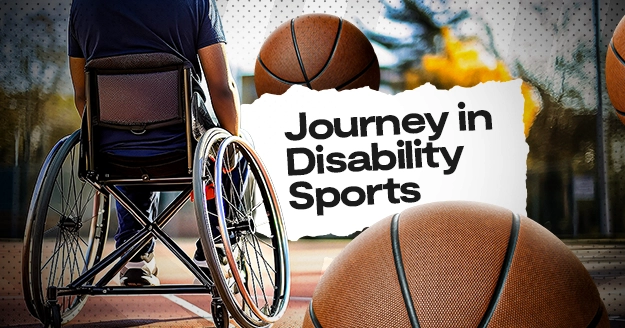Are you someone who has been diligently following a fitness routine but is now seeking to take it up a notch?
Perhaps you’ve hit the age of 40 and beyond, and you’re thinking about transitioning from just staying fit to actively building muscle. Well, you’re not alone.
Many individuals find themselves in this exact situation. However, there is good news! Building muscle after 40 is definitely achievable with the right approach and mindset.
Why are you losing muscle in your 40s?
As we age, a natural process called age-related sarcopenia causes a decline in muscle mass and strength, typically starting around the age of 30.
Studies suggest that adults lose about 3 to 8% of their muscle mass per decade after 30, with the rate of loss accelerating after 60. Recent research indicates that muscle loss and strength decline may be even faster, particularly for middle-aged adults over 40. A study comparing leg muscle strength between those under 40 and those over 40 found significant strength losses of up to 40%.
This highlights the importance of learning how to build your muscle after age 40 to counteract the rapid decline in muscle mass and strength experienced between the 30s and 50s.
Can You Build Muscle After 40?
The encouraging news is that despite the belief that muscle strength and size decline with age, research proves otherwise.
It’s possible to build muscle and increase strength after the age of 40. Consistent strength training in your 40s and beyond not only slows down muscle loss, but also potentially reverses it, along with improving bone density and reducing body fat percentage. This implies that achieving muscle growth in your 40s is feasible with dedicated implementation of effective strategies.
Additionally, there’s evidence suggesting that strength training can mitigate aging signs at the cellular level, which adds to its appeal.
Tips for Building Muscle at 40
Transitioning from being a fitness follower to actively pursuing muscle building after 40 requires a few key adjustments in your workout regimen, diet, and overall lifestyle. These tips will assist you in navigating this exciting journey:
Revamp Your Workout Routine
Instead of solely focusing on cardiovascular exercises or general fitness classes, incorporate strength training into your regimen. Strength training, including lifting weights, resistance bands, or bodyweight exercises, is crucial for building muscle mass, improving bone density, and boosting metabolism.
Think High Volume
To effectively build muscle after 40, it’s crucial to focus on adequate training volume, including the number of reps, sets, workouts per week, and exercises per week, as well as the weights used during workouts.
A commonly recommended approach for muscle building is to perform three sets per exercise, aiming for 8 to 12 reps per set. These repetitions should be done with a weight equivalent to 70 to 85% of your one-repetition maximum (1RM), which represents the maximum weight you can lift for one repetition. It’s important to work to near fatigue, leaving one or two reps in reserve (RIR) by the end of each set.
Prioritize Progressive Overload
As we age, our bodies become more resistant to change, making progressive overload essential for muscle growth. Gradually increase the intensity, reps, sets, weight, or volume of your workouts to challenge your muscles continually.
Get Enough Protein
Adequate protein intake is vital for muscle building after 40.
Aim for around 1.2 to 2.2 grams of protein per kilogram of your body weight daily, spread evenly throughout meals and snacks. Protein provides essential amino acids you need for muscle protein synthesis, helping to maintain and build muscle mass while slowing down age-related muscle loss.
Include protein-rich foods like lean meats, eggs, tempeh, fish, dairy, and plant-based sources in your diet, and consider using protein supplements if necessary.
Consider High-Intensity Interval Training
Incorporating high-intensity interval training (HIIT) workouts for cardio is recommended for both men and women to aid muscle building in your 40s. This training style effectively burns fat, boosts metabolism, builds muscle, and increases key hormones like growth hormone and testosterone.
Consider Supplements
If you’re having difficulty maintaining muscle mass despite doing workouts for men over 40, incorporating certain supplements may be beneficial.
Examples of potentially helpful supplements for supporting muscle growth in your 40s include protein powders, BCAAs, creatine, and collagen protein.
It’s important to note that we only recommend safe, legal, and FDA-approved athletic supplements, avoiding the use of anabolic steroids.
Consider consulting with your doctor about checking your hormonal levels. You can also discuss whether supplements for muscle growth or even starting hormone replacement therapy might be helpful for you.
Prioritize Recovery
As you age, your body may take longer to recover from intense workouts. Ensure you’re getting adequate sleep, typically 7-9 hours per night, to allow your muscles to heal and grow. To avoid overtraining and lower your chance of injury, think about including rest days in your schedule.
Train Consistently
Consistency is key to building muscle in your 40s, so stick to your strength training routine.
Aim for at least 3 strength training sessions every week, with a rest period of 24-48 hours between workouts targeting the same muscle groups to allow for proper recovery.
Depending on your schedule, full-body workouts might be more beneficial than splitting workouts by body parts for muscle building after 40. Some studies suggest that three full-body strength training sessions per week can be more effective for muscle growth compared to body part splits. However, it’s worth noting that these studies mainly involved younger men, so the same results may not apply to individuals over 40.
Interestingly, the full-body workouts in these studies included only one exercise per muscle group, indicating that you don’t need to spend hours at your gym to achieve good results.
Listen to Your Body
Notice how your body responds to various intensities and exercises. Be mindful of any discomfort or pain, then adjust your workout accordingly. Finding a balance between pushing yourself and knowing when to take a step back to prevent injury is crucial.
Seek Professional Guidance
Consider working with a fitness coach or certified personal trainer who specializes in training individuals over 40. They can provide personalized guidance, tailor workouts to your specific needs and goals, and ensure you’re using proper form to minimize the risk of injury.
In conclusion, transitioning from a fitness follower to actively building muscle after 40 is entirely feasible with the right approach. Age is just a number. It is never too late to prioritize your physical health and overall well-being.

